|
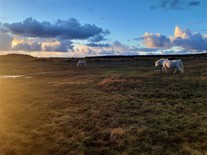
Welcome to a bumper Winter 2021 edition of the newsletter to keep you updated on the Twyni Byw – Sands of LIFE project.
|
|
|
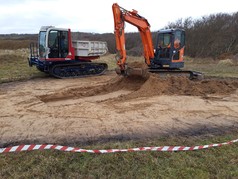
As the cold grasp of winter takes hold of our sand dunes, our project team will be busy doing their utmost to complete work in time to boost this precious habitat for the start of spring.
At Newborough Warren, we will continue with our work to help the sand dunes by completing scrub removal in the forest glades. We will also scrape and lower the level of a dune slack, known locally as the ‘Gull Slack’, to help recreate bare sand habitat and boost dune specialist plants and invertebrates.
Over at Morfa Harlech, we will complete one of two dune slack scrapes to help restore the site’s dunes. This work will be done in partnership with the Royal St David’s Golf Club. There will also be some de-stumping of a former pine plantation to recreate natural bare sand habitat.
Down at Pembrey Burrows, we will be creating three frontal dune notches, as well stripping turf from areas of dune grassland and creating dune slack scrapes. This will again boost some of Wales’ rarest wildlife that depends upon bare sand habitat and increase the natural movement of sand in the dunes.
Whilst over at Kenfig, two dune slacks will be scraped and nearby scrub cleared. All of our work should provide our dunes with a much-needed tonic in time for the flowering season of spring.
*All work plans are subject to change due to the Coronavirus regulations.
|
|
|
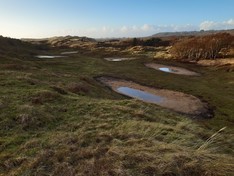
We recently completed work at Merthyr Mawr to scrape and lower the levels of some dune slacks to encourage bare sand habitat. We also mowed areas of the dunes to help low-growing dune plants, pollinators and other invertebrates – and the rabbits too!
Laura Bowen, the Sands of LIFE Project and Monitoring Officer South, said:
“This vital work will encourage bare sand habitat that is a crucial component of our project’s aim to revitalise sand dunes across Wales."
Due to the proximity of our work to the Scheduled Ancient Monument at Merthyr Mawr, we worked closely with Trysor. We’d like to thank them for their assistance throughout the work.
More details of the work can be found here.
|
|
|
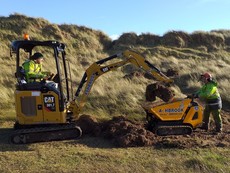
At Tywyn Aberffraw we recently stripped the turf from six areas within the dune slacks, to create bare sand habitat that is crucial to the survival of some of Wales’ rarest plants, especially mosses and liverworts.
Scrub was cut back to prevent it from taking over flower-rich dune grassland, and to allow better access through the dunes for both people and livestock.
Invasive non-native plants, such as beach rose, New Zealand flax and montbretia will also be removed in the New Year. If left unchecked, they can spread to smother large areas of dunes.
Leigh Denyer, Sands of LIFE Project and Monitoring Officer North, said:
“Our work at Tywyn Aberffraw is crucial to our aim of revitalising sand dunes across Wales. Tywyn Aberffraw’s dunes are classed as a Special Area of Conservation and are of international importance for biodiversity.”
The Sands of LIFE project worked closely with the Bodorgan Estate, who own and manage the dunes at Tywyn Aberffraw.
More details of the work can be found here. The story was also featured in the Daily Post newspaper.
|
|
|
Our contractors have since completed the mowing work in one of the slacks at Whiteford Burrows. This will hopefully boost the site’s dune grassland and its carpets of flowers and rare orchids. We look forward to reaping the reward come spring. |
|
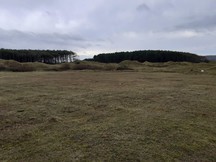 |
|
|
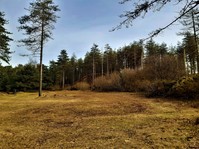
Work is completed or underway at several spots across Newborough including mowing, scrub clearance and removal of invasive alien species.
Most noticeable for visitors to the Forest, is the continuation of work to open an overgrown dune slack adjacent to the main car park. On the Warren we are working to eliminate sea buckthorn which is not native to Wales and can quickly create impenetrable thorny thickets.
|
|
|
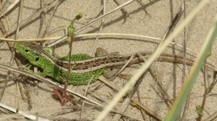
We have released a new report that sheds some light on the populations of sand lizards at two sand dune sites on Anglesey.
A series of ten separate survey visits found sand lizard populations at the two surveyed sites; Tywyn Aberffraw and Newborough Warren.
The surveys were carried out in areas where our work is planned. Searches took place in April, May and September 2019, and breeding within the last year was evident.
The sand lizard is Wales’ rarest reptile. As a European Protected Species, appropriate survey and mitigation is necessary before any intervention work is carried out.
Read the full story here.
|
|
|
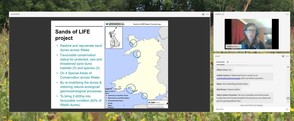
Kathryn Hewitt, Sands of LIFE Project Manager recently gave a well-attended virtual presentation at the yearly Wales Biodiversity Partnership Conference. We would like to thank the organisers for allowing us to chat in detail about our project as part of the Thursday morning session on ‘Restoring resilient habitats’.
|
|
|
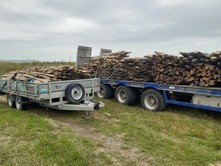
We are glad to announce that our Conservation and Fencing Procurement Framework, worth £1.4m, is now up and running. It is initially for 12 months but can be extended until the end of the project in December 2022. This will help to streamline the procurement of the project’s conservation work and enabling us to access pre-approved contractors, which goes hand-in-hand with keeping our dunes healthy.
|
|
|

We are also glad to announce that we have had another two A1 panels installed, this time at Merthyr Mawr and Newborough Warren. Keep an eye out if you visit these special sites soon.
Whilst over at Pembrey Burrows, our recent new fences and kissing gates are now wearing their EU LIFE acknowledgement plaques. The gates and fencing help protect livestock whilst also allowing easier access for people.
|
|
|
 |
|
SoLIFE: LIFE 17 NAT/UK/000023
The Twyni Byw-Sands of LIFE project has received funding from the LIFE Programme of the European Union Part funded by Welsh Government.
|
|
|
|
|